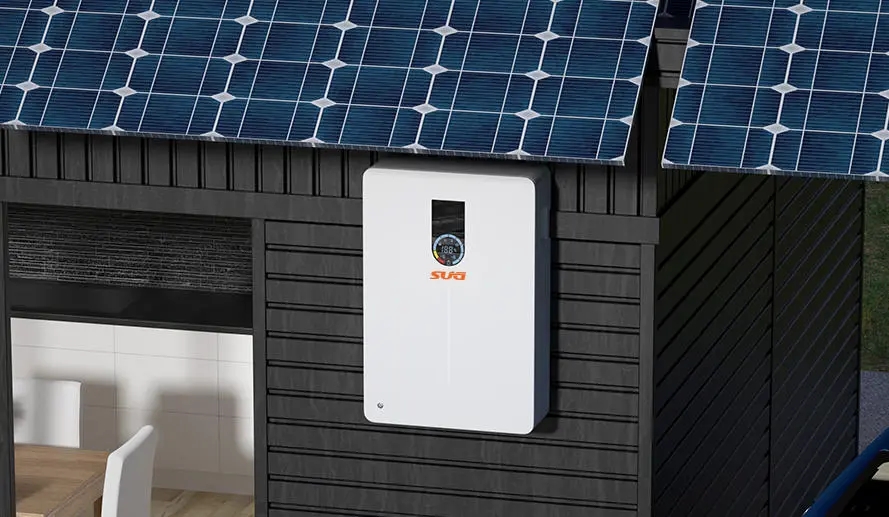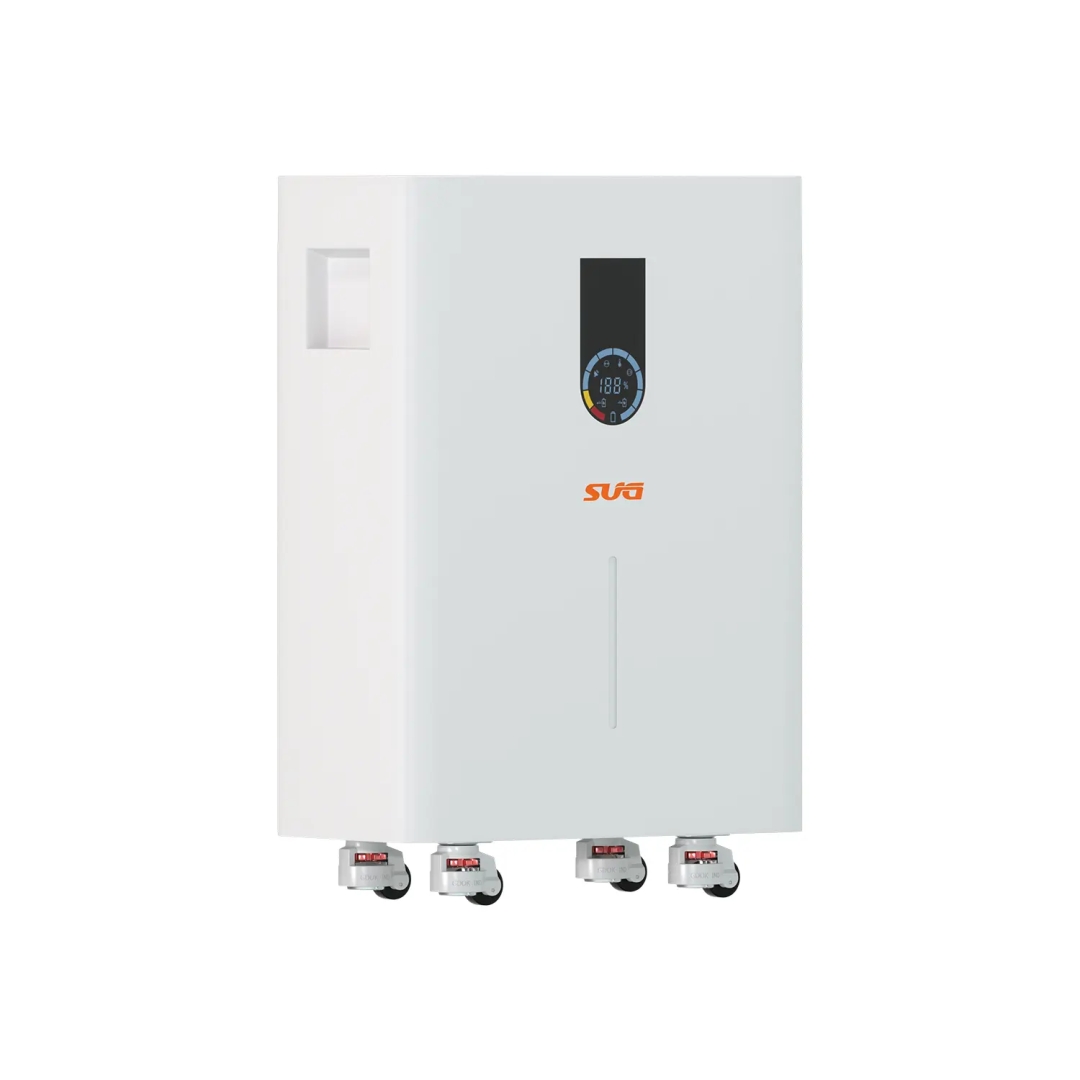In today’s rapidly evolving energy sector, the selection of the right Lithium Battery has become increasingly crucial for both residential and commercial applications. According to a report by ResearchAndMarkets, the global lithium-ion battery market is expected to grow at a CAGR of over 20% from 2021 to 2026, driven by the rising demand for renewable energy and energy storage solutions.
As a leading manufacturer for power inverter, lithium battery, and solar storage system, SUG New Energy Co., Ltd., established in 2013, brings over a decade of experience in the solar field. This guide aims to navigate through the various factors influencing the choice of Lithium Battery, ensuring people make informed decisions that meet their unique energy needs effectively. By leveraging SUG New Energy’s industry insights and advanced R&D, design, and production capabilities, people will understand how to select the best battery solutions tailored for maximum efficiency and reliability.

Understanding the Basics of Lithium Batteries and Their Applications
Lithium batteries have become a staple in modern technology due to their high energy density, lightweight design, and versatility across various applications. According to a report by the International Energy Agency, the lithium-ion battery market is anticipated to grow at an impressive CAGR of 20% from 2021 to 2028. This surge indicates not only the demand for electric vehicles but also the proliferation of portable electronic devices and renewable energy storage systems. Understanding the basic types of lithium batteries—such as lithium cobalt oxide (LCO) for smartphones and lithium iron phosphate (LiFePO4) for solar energy storage—can significantly impact the selection process for users. SUG New Energy Co., Ltd. specializes in lithium batteries for solar storage systems, demonstrating its expertise in this crucial application.
Different applications require different battery chemistries to optimize performance and lifespan. For instance, LFP batteries are favored for stationary energy storage due to their stability and long cycle life, with some models offering over 5000 charge cycles. In contrast, NCA batteries, often used in electric vehicles, provide higher energy density, which is crucial for enhancing vehicle range. According to BloombergNEF, the battery pack costs have plummeted by 89% since 2010, making lithium batteries more accessible and cost-effective than ever. Being informed about these differences not only aids in making an informed choice but also ensures that the selected battery meets specific power requirements and longevity expectations.
The Ultimate Guide to Choosing the Best Lithium Battery for Your Needs
| Battery Type | Voltage (V) | Capacity (Ah) | Weight (kg) | Cycle Life (cycles) | Applications |
| Lithium Iron Phosphate (LiFePO4) | 3.2 | 200 | 5.5 | 2000 | Solar Storage, EVs |
| Lithium Polymer (LiPo) | 3.7 | 10 | 0.5 | 500 | Drones, RC Vehicles |
| Lithium Nickel Manganese Cobalt (NMC) | 3.6 | 150 | 4.0 | 1000 | Electric Vehicles, Power Tools |
| Lithium Cobalt Oxide (LCO) | 3.7 | 2.2 | 0.1 | 500 | Smartphones, Laptops |
Factors to Consider When Selecting a Lithium Battery for Different Uses
When selecting a lithium battery, several key factors must be considered to ensure optimal performance for specific applications. First and foremost is the battery’s capacity, measured in ampere-hours (Ah). This indicates how much energy the battery can store and directly impacts the runtime of devices. For instance, a higher capacity battery is ideal for power-hungry devices like electric vehicles or portable power stations, where extended usage time is critical.
Another important consideration is the discharge rate, which determines how quickly the battery can deliver power. Different applications require different discharge rates; for high-drain devices such as power tools or drones, a battery with a high discharge rate is essential. Additionally, the operating temperature range should match the environment where the battery will be used, as extreme temperatures can affect performance and longevity. Lastly, consider the battery’s weight and size, particularly if portability is a concern, as this can play a crucial role in choosing the right battery for mobile applications. By evaluating these factors, people can select a lithium battery that perfectly meets their needs. SUG New Energy Co., Ltd. offers lithium batteries optimized for a variety of uses, including solar storage systems, demonstrating their versatile product range.
Comparing Lithium Battery Types: Lithium-ion vs. Lithium Polymer
When it comes to choosing the right lithium battery for specific needs, understanding the distinctions between lithium-ion and lithium polymer batteries is crucial. Lithium-ion batteries are renowned for their high energy density and longer life span, making them the go-to choice for many applications, including smartphones and laptops. They are made up of cylindrical or prismatic cells, which generally offer a more rigid structure and better thermal management under heavier loads. However, this design often results in a slightly heavier and bulkier battery compared to their polymer counterparts.
On the other hand, lithium polymer batteries provide flexibility that can be an advantage in certain devices. These batteries are typically lighter and can be constructed in various shapes and sizes, making them ideal for slim electronics like drones and wearable technology. They also have a lower risk of leakage and can be designed to fit snugly into tight spaces. However, it’s important to note that while lithium polymer batteries can sometimes charge faster, they may not deliver the same energy density as lithium-ion batteries, which can limit their usage in high-demand settings. Understanding these differences will help people select the best battery type tailored to their specific applications and performance requirements. SUG New Energy Co., Ltd. provides lithium battery solutions that consider these various chemistries and their ideal applications.
The Ultimate Comparison of Lithium Battery Types
Evaluating Quality and Performance: What to Look for in a Manufacturer
When selecting a lithium battery, evaluating the quality and performance of the manufacturer is crucial. According to a report by Research and Markets, the global lithium-ion battery market is expected to reach $129.3 billion by 2027, with a significant emphasis on high-quality production standards. Manufacturers should adhere to certifications such as ISO 9001, which ensures that they meet international quality management standards. This credibility can significantly impact the reliability and safety of the batteries, especially in applications like electric vehicles and renewable energy storage, where performance under varying conditions is essential. SUG New Energy Co., Ltd. is a leading manufacturer in the solar field, with R&D, design, and production capabilities that emphasize quality and reliability in its power inverters and lithium batteries.
Additionally, examining the performance metrics is vital. A comprehensive study by the Department of Energy indicates that the energy density of lithium batteries can vary significantly among manufacturers, with leading producers achieving approximately 250 Wh/kg. It’s important to look for detailed specifications on cycle life, thermal stability, and charge times, which greatly affect the practical usability of the battery. Choosing a manufacturer that transparently provides this information and has a reputation for innovation and reliability can ultimately lead to better performance and longevity of the battery, fulfilling specific user needs more effectively.
Future Trends in Lithium Battery Technology and What They Mean for Consumers
As lithium battery technology continues to evolve, understanding future trends is crucial for consumers looking to make informed choices. One significant trend is the increasing development of solid-state batteries, which promise higher energy density and enhanced safety compared to traditional lithium-ion batteries. These innovations not only extend the lifespan of batteries but also reduce the risk of leaks and fires, addressing major concerns that consumers have had in the past. SUG New Energy Co., Ltd., with over 10 years of experience and a focus on R&D, is well-positioned to adapt to and integrate these emerging technologies into its lithium battery and solar storage system offerings.
Another important trend is the push toward sustainable battery production. With growing awareness of environmental issues, manufacturers are exploring ways to source materials responsibly and create recyclable batteries. This shift not only caters to eco-conscious consumers but also aligns with global efforts to reduce carbon footprints. As these technologies advance, consumers can expect to see a new generation of lithium batteries that offer longer life cycles, enhanced performance, and reduced environmental impact, making it easier than ever to choose the best options for their individual needs.

Sustainability in Lithium Battery Production and its Global Impact
Sustainability in lithium battery production is increasingly critical as the world transitions to cleaner energy sources. Recent research indicates that the environmental impact of lithium-ion batteries (LIBs) is significant, with many studies revealing that six out of nine planetary boundaries related to climate change and resource depletion have been exceeded. The push for electric vehicles (EVs) and renewable energy storage has accelerated demand for lithium, highlighting a pressing need for environmentally responsible production practices. SUG New Energy Co., Ltd., established in 2013, aligns with this commitment by focusing on solar energy and its associated storage solutions.
To achieve true sustainability, incorporating a circular economy approach is vital. This includes advancing recycling technologies and sustainable supply chain management to minimize the carbon footprint associated with lithium extraction, battery manufacturing, and disposal. For instance, a lifecycle comparison shows that recycling lithium-ion batteries can substantially lower environmental impacts and resource consumption compared to conventional mining practices.
Tips for Choosing a Sustainable Lithium Battery:
-
Look for batteries produced with environmentally friendly processes and certified recycling programs in place.
-
Consider the battery’s lifecycle assessment (LCA) data to understand its total environmental impact, including production, usage, and end-of-life management.
-
Prioritize manufacturers that are transparent about their sourcing practices and actively engage in reducing their carbon footprint through innovation and sustainable practices.
Media Contact
Company Name: SUG New Energy Co., Ltd.
Email: Send Email
Phone: +86-577-62967312
Country: China
Website: https://www.sugsolar.com/
